ABOUT VIENNA
HELLO & WELCOME TO VIENNA! HERE ARE SOME HIGHLIGHTS YOU WOULDN'T WANT TO MISS!
Vienna is the capital of the Republic of Austria and also one of the nine Austrian provinces. With about 1.9 million inhabitants, Vienna, located on the Danube, is the most populous major city in Austria, the second largest in the German-speaking world, and the sixth largest city in the European Union. Around 2.8 million people live in the Vienna metropolitan area - this corresponds to around one third of the total Austrian population.
Architecturally, Vienna is still characterized above all by the buildings around the Vienna Ringstrasse from the Wilhelminian period, but also by Baroque and Art Nouveau. Through its role as imperial capital and residence city of the Austrian Empire from 1804, Vienna became a cultural and political center of Europe in the 19th century. Around the year 1910, when Vienna was still the capital of the Habsburg Monarchy, the city counted over two million inhabitants as the fifth largest city in the world.
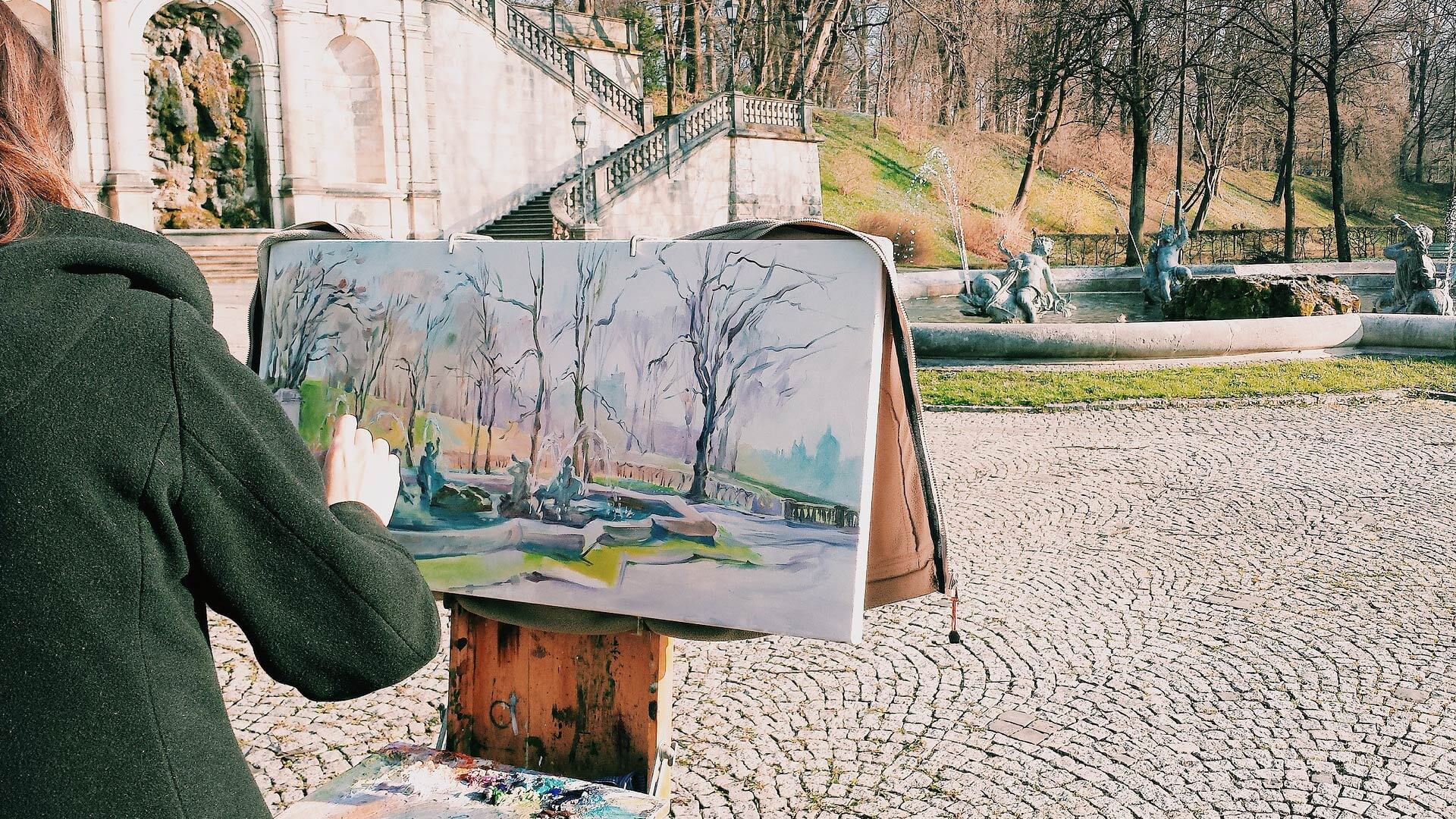
ACADEMY OF FINE ARTS: PAINTING GALLERY
Schillerplatz 3, 1010 Vienna
For art lovers, the Academy of Fine Arts is a dream come true. Because here you can admire numerous paintings of the most different epochs. The works of the famous masters are remembered for a long time.

THEATERMUSEUM
Lobkowitzpl. 2, 1010 Vienna
The Theater Museum offers you the opportunity to immerse yourself in the fascinating world of theater of the past 300 years. In addition to countless stage models, you can let yourself be carried away by graphics and photos into the world of performing arts. In addition, numerous concerts are held in the "Eroica Hall" in the museum.

ZOOM CHILDREN'S MUSEUM
Museum Square 1, 1070 Vienna
You want to make your children's eyes sparkle? Then the Zoom Children's Museum is the right place for you. Because here there are attractions for every age group. The museum continuously offers various exhibitions and workshops. In addition, a fantastic multimedia laboratory delights children. Here, specific areas of research can be discovered.

ANCHOR CLOCK
Hoher Markt 10-11, 1010 Vienna
In the center of Vienna you can admire a unique clock. The anchor clock is a connection between two buildings of the so-called Ankerhof. A pair of figures crosses this bridge every hour on the hour. The historical anchor clock fascinates children and adults.

AUGUSTINE CHURCH
Augustinerstrasse 3, 1010 Vienna
The Augustinian Church is definitely worth a visit. The historic church was the court parish church of the imperial and royal monarchy. Monarchy. Once important imperial weddings took place in the magnificent church. For example, Sissi gave Franz Joseph his vows there. Likewise, the Augustinian Church is world-famous for the urns of Habsburg hearts.

CAPUCHIN CRYPT
Tegetthoffstrasse 2, 1010 Vienna
The famous Imperial Crypt is located in the center of Vienna. Since 1633, members of the Habsburg family have been buried here. Especially the magnificent double sarcophagus for Maria Theresa and her husband, Emperor Francis I Stephen of Lorraine leaves a lasting impression. Many visitors also come to admire the coffins of Emperor Franz Joseph and Empress Sissi.

DEMEL - K.U.K. HOFZUCKERBÄCKER
Kohlmarkt 14, 1010 Vienna
You want to indulge yourself? The traditional Café-Konditorei Demel on Kohlmarkt in downtown Vienna enchants every palate. Even the Empress Sisi was completely thrilled by the confectioner's arts. In addition to the unique desserts, you will be served excellently by the Demel ladies in a unique ambience.

DEMEL - K.U.K. HOFZUCKERBÄCKER
Kohlmarkt 14, 1010 Vienna
You want to indulge yourself? The traditional Café-Konditorei Demel on Kohlmarkt in downtown Vienna enchants every palate. Even the Empress Sisi was completely thrilled by the confectioner's arts. In addition to the unique desserts, you will be served excellently by the Demel ladies in a unique ambience.

AUGARTEN VIENNA PORCELAIN MANUFACTORY & PORCELAIN MUSEUM
Obere Augartenstraße 1, 1020 Vienna
The unique Viennese porcelain manufactory in the Augarten in the 2nd district is definitely worth a visit. In this traditional factory, every piece is still made by hand. If you want to get a comprehensive insight into the art of porcelain manufacture, we recommend a guided tour of the imperial pleasure palace.

AUGARTEN VIENNA
1020 Vienna
Here you can enjoy nature to the fullest. The Augarten, a largely public park of the Bundesgärten. It impresses with the oldest baroque gardens in Vienna. The well-kept parterre garden, with its elaborate floral landscapes and extensive avenues, should not be missed by nature lovers on a visit to Vienna Leopoldstadt.

Vienna Imperial Palace
Michaelerkuppel, 1010 Vienna
The Hofburg zu Wien was the residence of the Habsburgs in Vienna from the 13th century until 1918 (with interruptions). Since 1945 it has been the official residence of the Austrian Federal President. It houses most of the Austrian National Library as well as various museums (including the Albertina) and also the Federal Monuments Office. The irregular building complex, which has grown over the course of about seven centuries, covers an area of about 24 hectares, making it the largest built for non-religious purposes in Europe.
Meanwhile, the complex also includes two sacred buildings: the Hofburg Chapel and the Augustinian Church. Around 5,000 people live or work on the Hofburg grounds, which together with Heldenplatz are frequented by around 20 million people a year. The Hofburg is the property of the Republic of Austria and is administered by the Burghauptmannschaft.
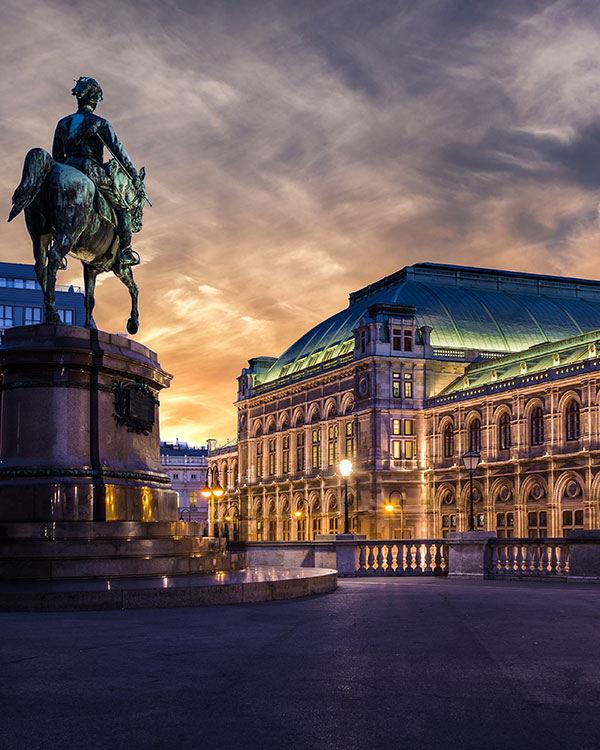
Vienna State Opera
Opernring 2, 1010 Vienna
The Vienna State Opera, the "First House on the Ring", is one of the most famous opera houses in the world and is located in Vienna's 1st district Innere Stadt. It was opened on May 25, 1869 with a premiere of Don Giovanni by Mozart. The Vienna Philharmonic Orchestra, among others, is recruited from the members of the State Opera Orchestra. The Vienna State Opera Chorus performs externally as the Concert Association Vienna State Opera Chorus.

Prater
1020 Vienna
The Vienna Prater is an extensive, about 6 km², largely public area in the 2nd Viennese district, Leopoldstadt, which still consists to a large extent of floodplain landscapes originally shaped by the Danube. When one speaks of the "Prater" outside of Vienna, often only the well-known amusement park in the Prater, the Wurstelprater, is meant. This is located at the northwestern tip of the area between the Danube and the Danube Canal and, in terms of area, makes up only a very small part of the entire Prater area. The Prater is located in the southeastern part of the river island formed by the Danube and Danube Canal since the Danube regulation ended in 1875.
An officially defined boundary of the Prater area does not exist. Over the course of time, the area designated as "Prater" has been significantly reduced by building development; today, for example, the built-up Stuwerviertel (formerly Schwimmschulmais, Feuerwerksmais) is no longer designated as part of Prater, nor is the Freudenau harbor, which is located in the very southeast of the island and is also referred to as Winterhafen.
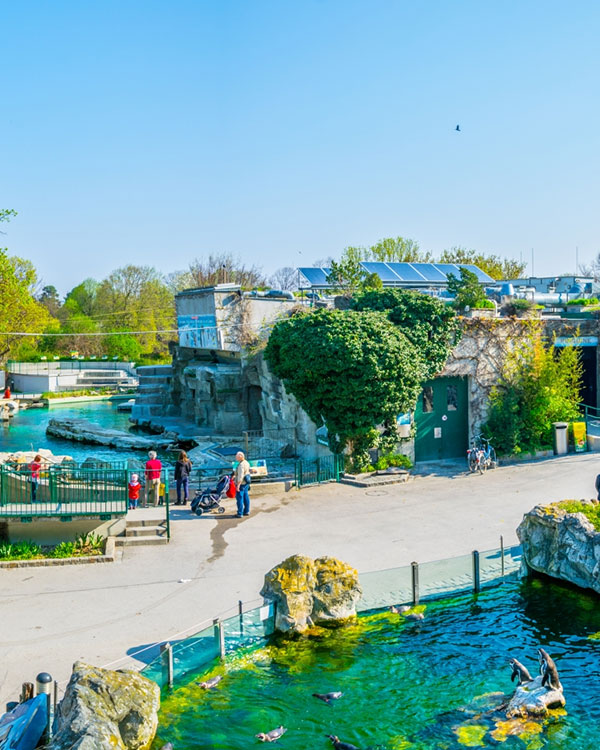
Schönbrunn Zoo
Maxingstraße 13b, 1130 Vienna
The Schönbrunn Zoo in the park of Schönbrunn Palace in Vienna's 13th district of Hietzing was founded by the Habsburgs in 1752 and is the oldest zoo in the world still in existence. It underwent several renovations and expansions. The zoo's director since 2007 is zoologist Dagmar Schratter. In Anthony Sheridan's zoo ranking, the zoo was named best European zoo five times in a row (2008, 2010, 2012, 2014 and 2018).
Franz Stephan of Lorraine, who had been elected Holy Roman Emperor as Franz I in 1745, commissioned the architect Jean Nicolas Jadot de Ville-Issey, also from Lorraine, to design a menagerie in the park of the new Habsburg-Lorraine summer residence at Schönbrunn.
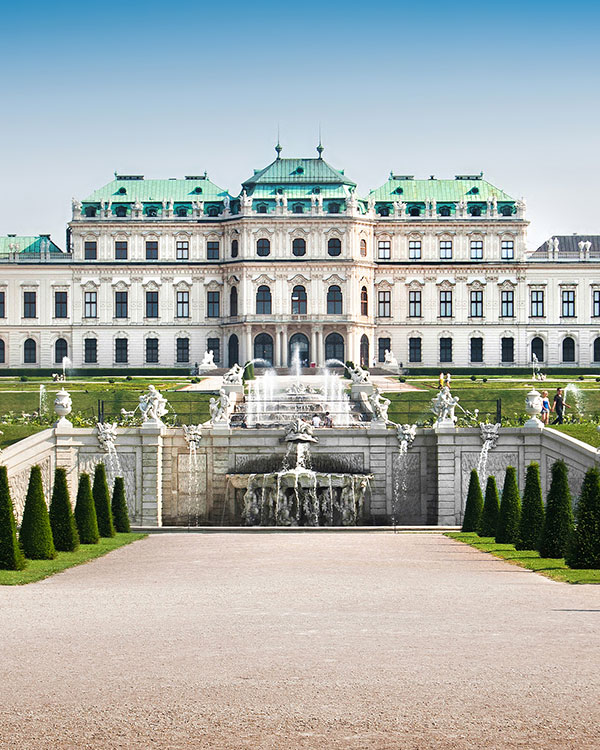
Belvedere Palace
Prinz Eugen-Straße 27, 1030 Vienna
The Belvedere Palace (from Italian "beautiful view"; traditional xenographic pronunciation without final e and emphasized on "the": in Vienna is a palace complex built by Johann Lucas von Hildebrandt (1668-1745) for Prince Eugene of Savoy (1663-1736) (since 1850 in the Landstraße district). The Upper Belvedere and the Lower Belvedere (named because of their location on a slope rising to the south of the city at that time) form a Baroque ensemble with the connecting gardens.
Today, the two palace buildings house the Belvedere's collections (Österreichische Galerie Belvedere) and rooms for temporary exhibitions. On May 15, 1955, the Austrian State Treaty was signed in the Upper Belvedere.
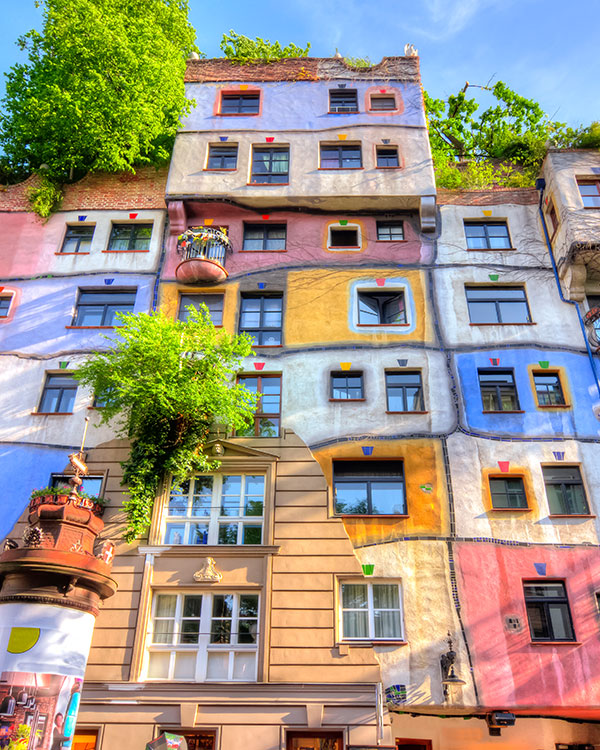
Hundertwasser House
Kegelgasse 36-38, 1030 Vienna
The Austrian artist Friedensreich Hundertwasser was involved with architecture since the 1950s. He began his involvement with manifestos, essays and demonstrations. His Verschimmelungsmanifest (Mildew Manifesto) became particularly well known. In 1972, he showed architectural models in the Eurovision program Wünsch Dir was (Make a Wish), which he used to illustrate his ideas of roof forestation, tree tenants, and window rights, and to develop architectural forms such as the Hoch-Wiesen-Haus (High Meadow House), the Augenschlitzhaus (Eye Slit House), and the Terrassenhaus (Terrace House).[1] In lectures at universities and at architects' associations and offices, Hundertwasser spoke about his concern for a more nature- and people-friendly architecture.
In a letter of November 30, 1977 to the mayor of Vienna, Leopold Gratz, Chancellor Bruno Kreisky recommended that Hundertwasser be given the opportunity to implement his concerns in the field of architecture in the construction of a residential building. Gratz then invited Hundertwasser in a letter of December 15, 1977 to design a residential building in Vienna according to his ideas.

Schönbrunn Palace
Schönbrunner Schloßstraße 47, 1130 Vienna
The Belvedere Palace Schönbrunn Palace, built in its present form in the 18th century as a summer residence for Empress (actually Empress and Archduchess) Maria Theresa, has been located in Vienna's 13th district, Hietzing, since 1892. Its name derives from a saying attributed to Emperor Matthias. He is said to have "discovered" an artesian spring here in 1619 while hunting and exclaimed: "What a beautiful fountain.
Schönbrunn is the largest palace and one of the most important and most visited cultural assets in Austria. The palace and the approximately 160 hectare park have been part of the UNESCO World Heritage Site since 1996. A main attraction in the palace park is the oldest zoo in the world still in existence, the Schönbrunn Zoo (16 ha). The palace and park are among the main tourist attractions in Vienna.
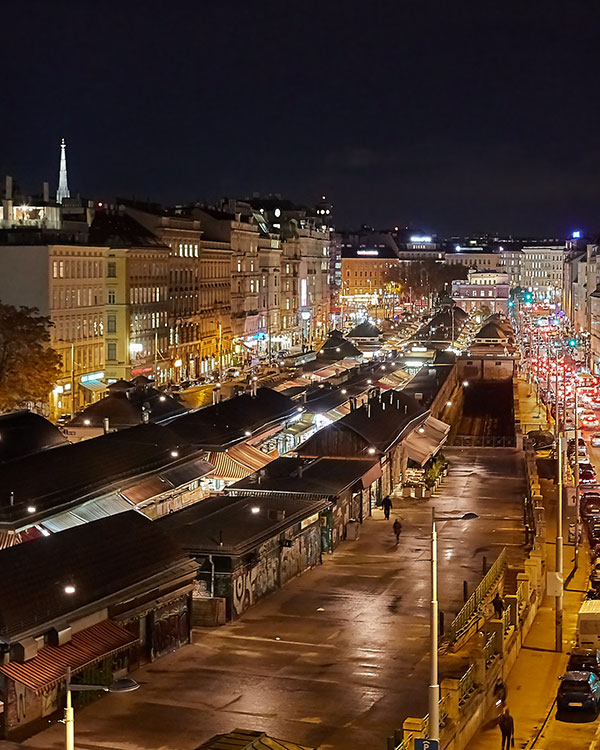
Vienna Naschmarkt
1060 Vienna
The Naschmarkt in Vienna's 6th district, Mariahilf, is the city's largest inner-city market, covering 2.315 hectares. It is located between the Left Wienzeile (main exit in the direction of Linz) and the Right Wienzeile (main entrance from the west) on the Vienna River, which is vaulted here. The Naschmarkt begins on the city center side at the Getreidemarkt (Secession) on the edge of the central Karlsplatz and extends westward to the Kettenbrückengasse subway station. It is considered a Viennese landmark. Since about 2000, the market has been supplemented by many gastronomic establishments.
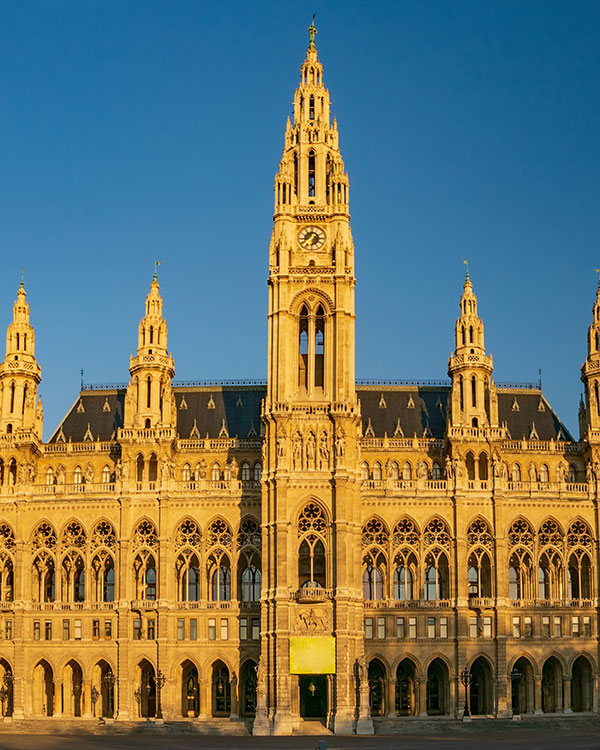
Vienna City Hall
Friedrich-Schmidt-Platz 1, 1010 Vienna
The Vienna City Hall on Rathausplatz in Vienna's 1st district, Innere Stadt, until 1960 called the New City Hall to distinguish it from the Old City Hall, was built from 1872 to 1883 in the neo-Gothic style according to designs by the architect Friedrich von Schmidt. It houses the offices of Vienna's mayor and provincial governor, since 1885 of the municipal council and since 1920 of the provincial parliament, of Vienna's city senate and provincial government, of the magistrate's director and of various magistrate's departments.
When Vienna's area and population grew considerably in 1850 due to the incorporation of numerous suburbs, the Old City Hall in Wipplingerstrasse soon became too small. After the city wall had been demolished by imperial decision in 1858-1865 and the Ringstrasse had been built, there was a call for tenders for the construction of a new city hall in 1868, from which the German architect Friedrich von Schmidt emerged as the winner.

People's Garden
Dr.-Karl-Renner-Ring, 1010 Vienna
The People's Garden is located on an area where in the past there were primarily fortifications. From 1596 to 1597, a courtine was built on the eastern side of today's park, and the castle redoubt was built on the southern side in 1639. This was blown up by the French in 1809 and later demolished. The construction of the hornwork courtine from 1817 to 1821 on the side of the present ring road brought the area within the city. A park was created in it, originally intended as a private garden for the archdukes, but at the suggestion of the Court Garden Administration it became the first publicly accessible park owned by the court and was ceremoniously opened on March 1, 1823.
From 1825, the name Volksgarten was in use. Ludwig von Remy was responsible for the concept of the garden, the horticultural design was carried out by the court gardener Franz Antoine the Elder. The strictly geometric shape of the paths also facilitated the supervision of visitors.

